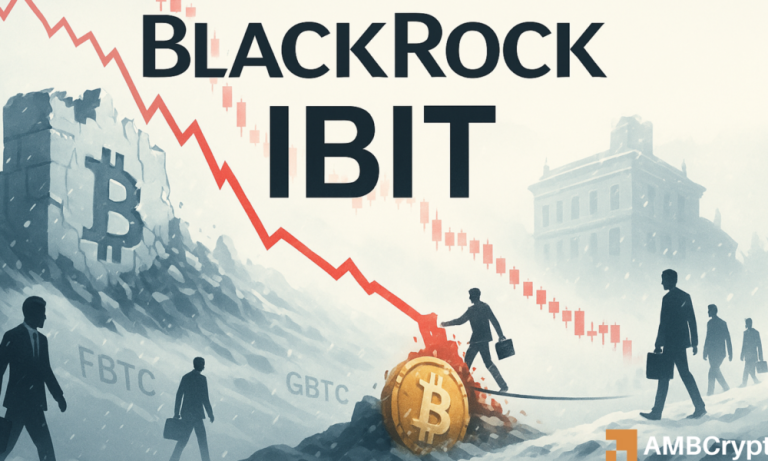
The cryptocurrency market is always in flux, and this week saw some dramatic movement. BlackRock’s iShares Bitcoin Trust (IBIT) made headlines after experiencing its largest single-day outflow yet, with $523.15 million withdrawn. This caps off five consecutive days of net withdrawals, bringing Bitcoin ETF outflows to a stunning $1.43 billion over just one week.
What Do the Outflows Mean for Bitcoin?
The IBIT, which remains the largest spot Bitcoin ETF globally with assets exceeding $72 billion, has been facing mounting pressure. Over the past month, net outflows have reached $2.19 billion, coinciding with a notable decline in Bitcoin’s price from its $126,080 all-time high to below $90,000.
However, experts argue that this doesn’t mark an exodus from Bitcoin. According to Vincent Liu, CIO of Kronos Research, the withdrawals are more indicative of strategic recalibrations in response to uncertain macroeconomic signals. Investors are lightening their Bitcoin exposure in anticipation of December’s Federal Reserve meeting, where a potential rate cut could shift market dynamics.
Bitcoin has, however, shown resilience by rebounding above $91,000. Market liquidity remains tight, and cautious sentiment prevails. At this point, the CME’s FedWatch Tool indicates only a 49% chance of a December rate cut, leaving institutions in a “wait-and-see” mode.
Spotlight Shifts to Solana ETFs
While Bitcoin ETFs have been grappling with outflows, Solana ETFs are quietly gaining momentum. The launch of Fidelity’s FSOL and Canary Capital’s SOLC earlier this week has attracted substantial investor interest. FSOL pulled in $2.07 million on day one, while existing Solana ETFs saw remarkable inflows:
- Bitwise’s BSOL: $23 million
- Grayscale’s GSOL: $3.19 million
In fact, Solana ETFs have enjoyed a 16-day streak of net inflows, totaling $420.4 million since late October. This trend reflects an increasing investor appetite for altcoins like Solana, which offer not just price gains but also productive asset features like staking exposure. Solana’s innovative offerings are attracting a new class of investors who are drawn to its unique combination of yield and blockchain activity.
What About Other Cryptos?
While Solana ETFs are shining, other altcoins like XRP and Hedera are also showing promising activity. For instance, Canary Capital’s spot XRP ETF attracted $8.32 million in new funds earlier this week. However, Litecoin and Hedera ETFs remained stagnant, reflecting what experts call “attention gravity.” Right now, the spotlight is on Solana and a select few cryptocurrencies, while the broader market takes a more conservative approach.
Investor Takeaway: Shifting Capital, Not a Crisis
Despite the headline-making outflows from Bitcoin ETFs, this isn’t a cause for panic. Institutions are merely readjusting their allocations to hedge against market risks. Bitcoin remains a cornerstone of institutional portfolios, but the rise of Solana ETFs illustrates that capital is shifting rather than exiting the crypto market altogether.
Looking forward, the Federal Reserve’s decisions in December will likely dictate the next phase in the market. If liquidity improves and policymakers adopt a dovish stance, we could see Bitcoin ETFs regaining their footing and a potential reversal of current trends.
For those looking to explore cryptocurrency investment opportunities, Solana presents an intriguing option. Solana-based staking platforms or investment tools, such as the Fidelity Solana ETF (FSOL), are garnering strong interest from institutional and retail investors alike.



